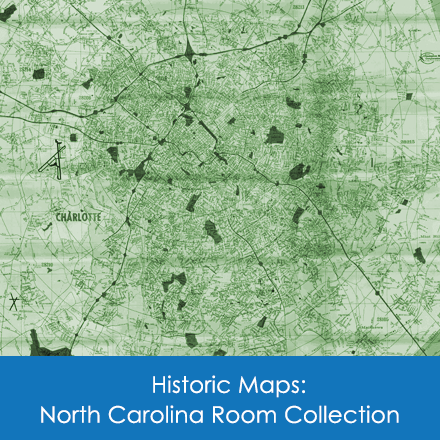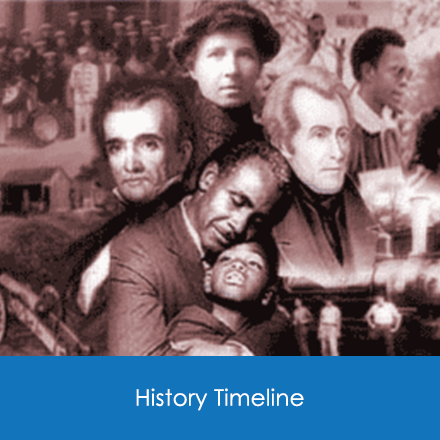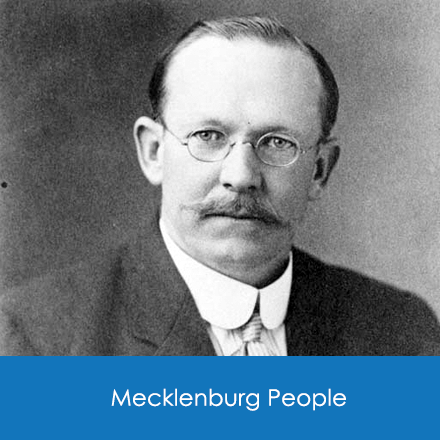You are here
A City Needs Boosters
MECKLENBURG staged one of its most notable independence day celebrations with the 1916 visit of President Woodrow Wilson. After a parade from the Southern Railway station on West Trade Street, Mr. Wilson spoke from a platform at Phifer Avenue and North College Street in front of the Presbyterian College. It was on this occasion that Charlotte's Mayor T. L. Kirkpatrick addressed a standing throng for some forty minutes in reviewing the illustrious history of Mecklenburg. For years the mayor would be scolded for having spoken twice as long as the President, and many years later in her memoirs Mrs. Wilson, who sat on the platform that memorable day, would refer to the mayor's long speech. But Colonel Kirkpatrick always insisted that Mr. Wilson told him he was not feeling well and asked him to stretch out his remarks. Governor Locke Craig in introducing the President did so in one brief sentence. The Kirkpatrick-Craig-Wilson speaking sequence would long be recalled by Charlotteans who stood packed together in the warm sunshine that day to hear Mecklenburg's pioneer patriots extolled in flaming bursts of oratory. The visit of the President brought thousands of visitors to the city; it was the largest celebration of the May 20 declaration to that date in the county's history.
That afternoon President and Mrs. Wilson visited Davidson College, where Wilson had been a student during the academic year of 1873-1874. When the President walked into his old room, No. 13 on the first floor of the old Chambers Building, the freshman who was rooming there at the time, it was reported, was so dumbfounded that he dived out the window as Mr. Wilson came in through the doorway.
Less than a year after Mr. Wilson's Mecklenburg visit, the United States was officially at war with Germany. In the nineteen months before the armistice of November 11, 1918, Mecklenburg supplied some eighteen hundred inducted service men and other hundreds who enlisted in the various branches of the military and naval forces or contributed their services to the nurses' corps, the Salvation Army, the Red Cross, the Y.M.C.A. and Y.W.C.A., and other groups engaged in the nation's gigantic war activity.
Charlotte became a name known in countless American homes through the establishment on the western outskirts of the city of a great Army training camp that at times housed more than 50,000 troops. The camp was named for the Revolutionary General Greene, who on December 2 in that desperate winter of 1780 in little Charlottetown had taken command of what was optimistically termed the American Army of the South.
And to those who knew their Revolutionary War history, that winter of 1917-1918 in Charlotte would remind them of the rigorous 1777-1778 at Valley Forge. One of Charlotte's strong arguments in the city's bid for the camp was the mildness of the winter climate that would permit efficient training of the recruits. But hardly had winter begun when these young men, coming south with visions of tanning themselves in warm southern sunshine, stepped from their trains into snow deeper oftentimes than that they had left in New England or other northern or eastern sections. It snowed intermittently throughout the winter and the frozen ground made both construction of camp facilities and the training of inductees difficult. But despite the terrors of the weather and, in late 1918, a disastrous influenza epidemic that killed hundreds, Mecklenburg's reception of these young men was so warm and generous that after the war many returned to Charlotte to marry and establish homes and become influential citizens. One such soldier was Herbert H. Baxter, a Bostonian who would become mayor of Charlotte and a long-time member of the city council. Recorders of the Mecklenburg story will doubtless agree that these years marked the beginning of Charlotte's emergence as a cosmopolitan community. From World War I days on, Charlotte would continue to attract as residents citizens from many sections of the nation. Never again would the community be the leisurely paced and provincial region it had been during the first century and a half of the republic's existence.
It was in the period following shortly upon the ending of World War I that Charlotte began an expansion that within a few decades would see the population double and redouble until the 1960 census would reveal it had passed the 200,000 figure. But historians seeking the causes of this tremendous expansion would find it necessary to go back into the years before the war's beginning, for as the new century began, civic-minded citizens already were looking ahead to a burgeoning metropolis pushing outward from the crossing point of those straggling red roads of Revolutionary Charlottetown. One of the evidences of this awakening to the opportunities ahead was the meeting on October 20, 1905, of a group of such citizens in the office of a young lawyer named E. Randolph Preston and the organization of the Greater Charlotte Club, whose slogan was "Watch Charlotte Grow." And although the war interrupted this growth to some extent - in bringing soldiers to Camp Greene who would return as residents it also helped spur the city's development - Charlotte shortly began an expansion that soon thrust the Queen City into the very forefront of southeastern municipalities.
The Greater Charlotte Club, however, was not the first organization designed to promote the development of Charlotte. Three decades before its organization there had been a Charlotte Board of Trade that within a few years came to be known as the Chamber of Commerce. But the Chamber was ineffective and about 1893 ceased to function. About a decade after the Greater Charlotte Club was launched, however, it became a revived Chamber of Commerce. When the new Chamber was organized on June 17, 1915, one of the members of the board of directors was a College Street-born business man who as a boy had been employed to light the gas lamps along Tryon and Trade Streets. His name was Clarence Otto Kuester.
Four years after the formation of the organization, Mr. Kuester would be prevailed upon to become its full-time executive as vice-president and business manager, and until his death on March 12, 1948, as "Booster" Kuester he would be known throughout the nation as this section's most enthusiastic and successful promoter. The tireless energy of Clarence Kuester and the wide support of his enthusiastic leadership was able to command kept the city and the Piedmont Carolinas under the appraising scrutiny of national leaders of business and industry. One of the principal reasons for the success of these efforts was the fact that the advantages of the Piedmont section as Charlotte's greater trading territory were just as enthusiastically presented as those of the city itself. Countless speeches in the larger industrial centers of the nation, innumerable brochures describing Charlotte and the Piedmont, motorcades carrying Charlotte and Carolina delegations to other cities, and receptions in Charlotte for visiting captains of business and industry hammered insistently the theme of Charlotte's importance as the center of a developing region of superior advantages.
One of the objectives of the Chamber was the promotion of the good roads movement. Mecklenburg had long been North Carolina's foremost exponent of good roads. In fact, about the time the first Chamber of Commerce was being formed in 1879 the pioneer good roads acts was passed by the General Assembly, which was applicable to Mecklenburg only, making the county the unit and levying a special tax for the construction and maintenance of roads. Mecklenburg soon became known for its macadamized roads. In 1915, the same year the modern Chamber was organized, the General Assembly established the State Highway Commission. And shortly after his election as Governor, Charlotte's Cameron Morrison led the movement to build highways connecting every county seat and principal town in the state. In all these activities in promotion of good roads, Charlotte's Chamber, led by Mr. Kuester and with the enthusiastic support of many other civic leaders, gave determined aid. Their goal was good roads not only in North Carolina but throughout the southeast and the nation. The leadership of Charlotte's Colonel T. L. Kirkpatrick in the good roads movement received national recognition with his election as president of the United States Good Roads Association. During these early years of the road building movement the Chamber sent motorcades into other states to help develop interest in the construction of connecting highways.
Charlotte's situation in almost the exact geographical center of the Carolinas was one of its most important advantages. The great network of state highways begun in the administration of Mecklenburg's Governor Morrison, who later would become both United States Senator and Representative in Congress, was carried forward under subsequent administrations. Furthermore, during the four years in office of Governor W. Kerr Scott virtually every road of more than small local importance was paved, so that North Carolina's pioneer good roads county in 1960 continues the foremost in the state in both the length of its permanent roads system and the enthusiasm of its support of highway construction and maintenance. This development of highways leading out in every direction from Charlotte to connect the city with all parts of the nation was one of the factors, of course, largely responsible for this city's becoming a motor transportation center second only to Chicago in importance in the nation
Blythe, LeGette and Brockmann, Charles Raven. Hornets' Nest: The Story of Charlotte and Mecklenburg County. Charlotte, NC: Public Library of Charlotte and Mecklenburg County, 1961.


